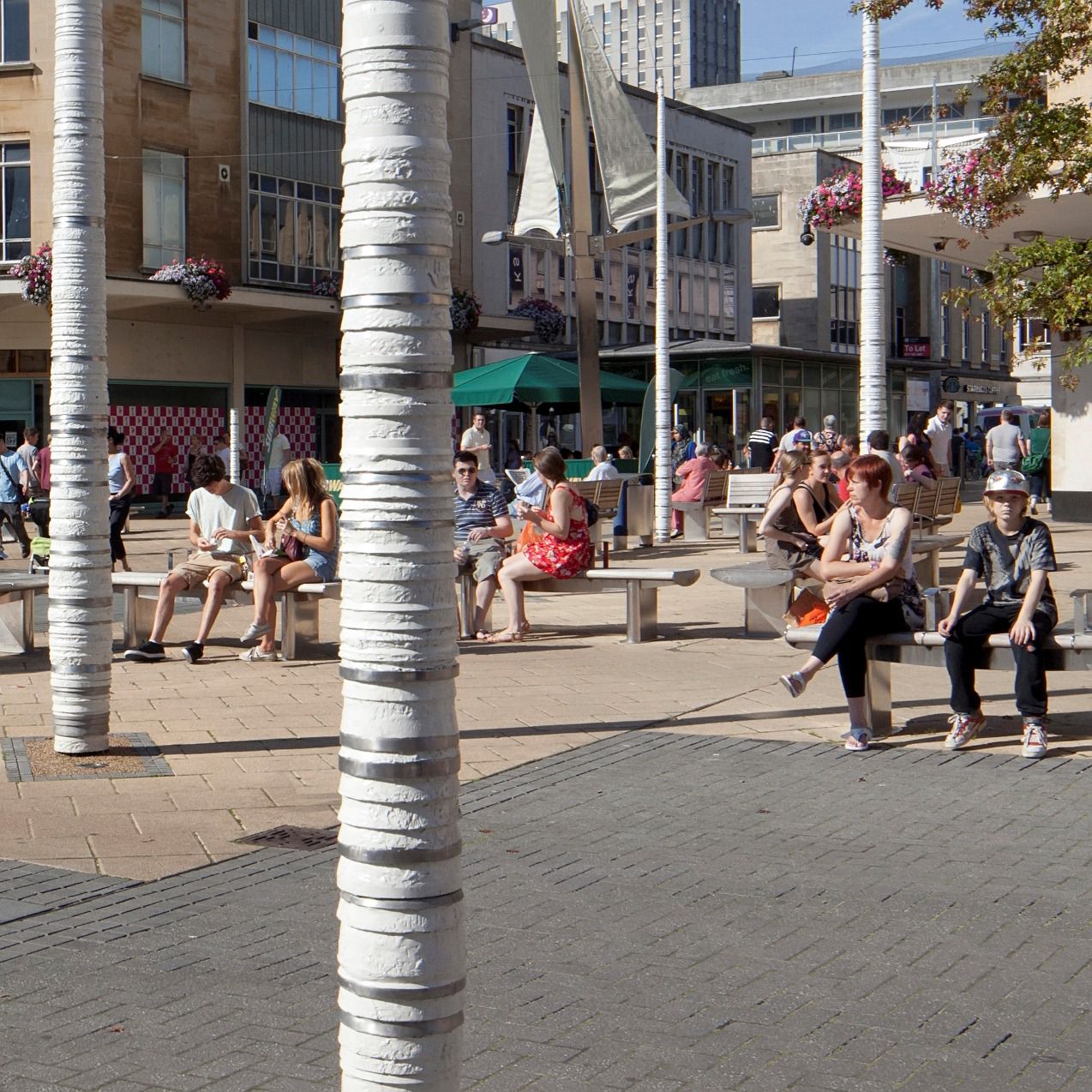1991 - 1993
Castle Park Public Art Programme
By Alan EvansAlan PetersAlan TilburyAlexander BeleschenkoAnn ChristopherCarey MortimerDail Behennah & Fred BrodnaxIllingworth and PartridgeJamie McCulloughJim AdlingtonKate MaloneMatthew FeddenMiles DaviesPeter MilnerPeter Randall PageRachel FennerSarah MoreSue Ridge and James HorrobinThomas NortonTony EastmanTony SindenVictoria Moreton
Synopsis
Castle Park is apparently where Bristol began and is one of the city’s most important archaeological sites. The History Trail covers a time span of a thousand years from the city’s Saxon origins to the present day. In the 1980’s this riverside area was in need of major refurbishment and a public art component was added to the landscape re-development plan.
Description
This was one of the first and largest public landscape and art commissioning projects in the south west. There were numerous commissions from artists and craftspeople as part of the city centre park refurbishment.
Castle Park still provides a unique setting for a selection of public art, known collectively as the Castle Park Public Art programme. The work ranges from practical items such as seats and a drinking fountain to formal sculpture and a ceramic floor. The art programme and renewal of the park was developed in response to the previous regeneration of Broadmead in the early 1990s (Cabot Circus now precedes this development). The commissions were characterised by artists collaborating with professionals such as landscape architects and looking to the history of the local area.
For information on individual commissions please download The Castle Park Public Art Leaflet.
Commissioned artworks include: Beside the Still Waters by Peter Randall Page who worked with Bristol City Council landscape architects using Kilkenny limestone, Pennant stone, horn beam hedge and pleached Lime trees; Drinking Fountain in bronze by Kate Malone; Herb Garden Railing by Alan Evans; and park benches in oak and steel by Alan Tilbury.
In 2000 as part of Year of the Artist, Bristol City Council commissioned artist Helen Schell to produce a flowering artwork for Castle Park with 20,000 tulip and daffodil bulbs planted in November. The project complemented Annie Lovejoy’s Year of the Artist residency with the Parks Service to create the Purdown Man, an ecological artwork made up of 5000 Ox-eye daisies.
"I wanted to create a work that celebrated the preservation of an intriguing landscape easily accessible via public rights of way from the inner city. The familiar pedestrian symbol is environmentally recreated in urban parkland and draws on the history of figurative icons in the landscape."Annie Lovejoy


